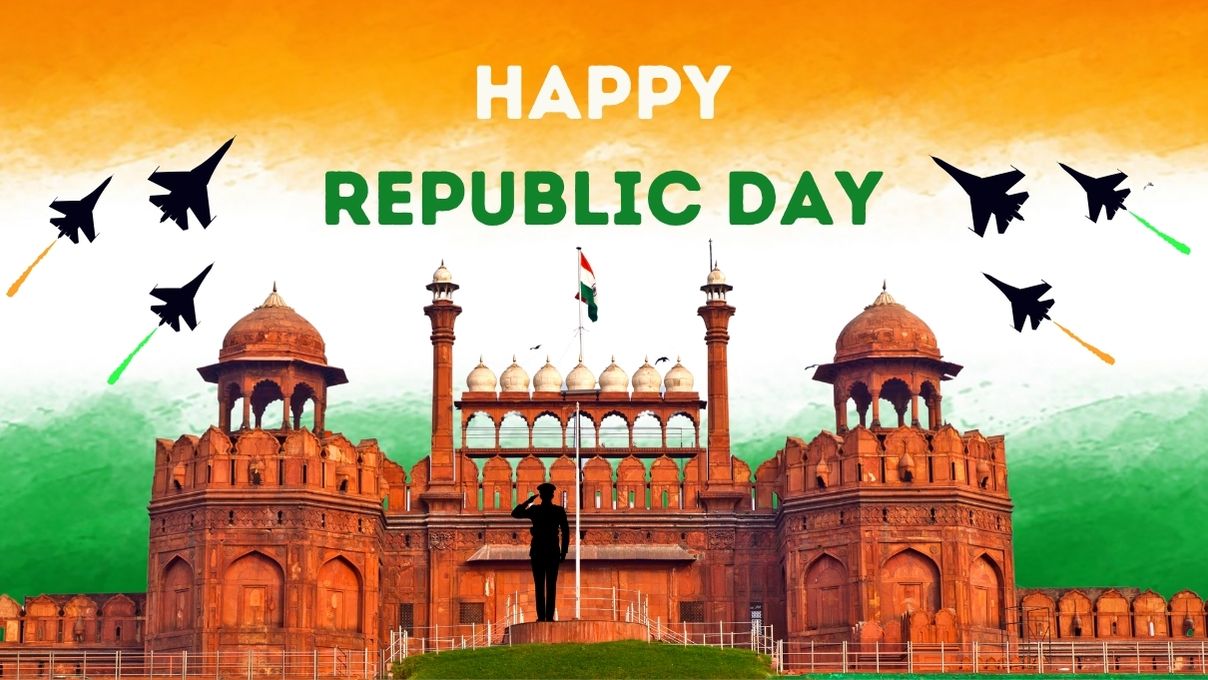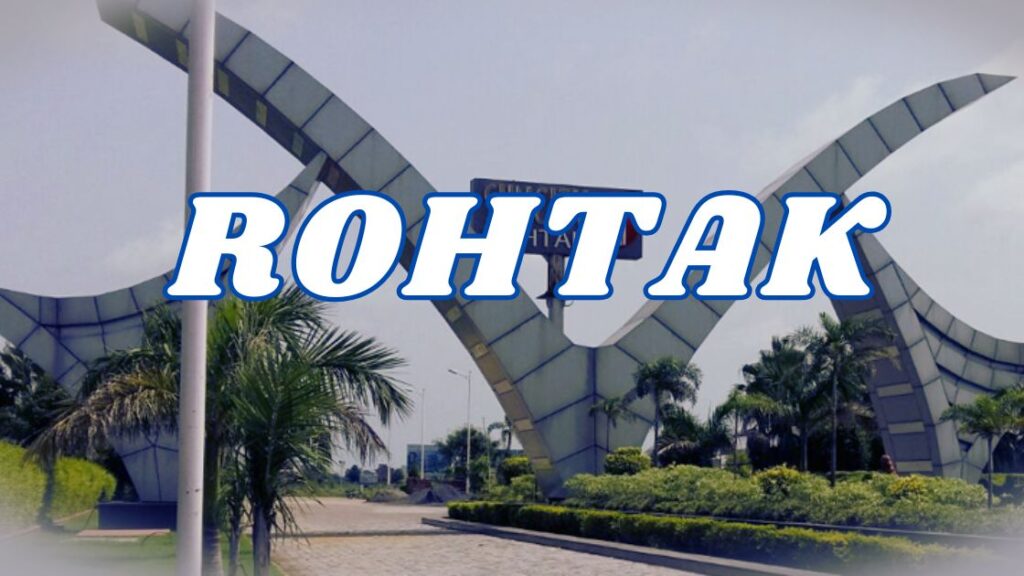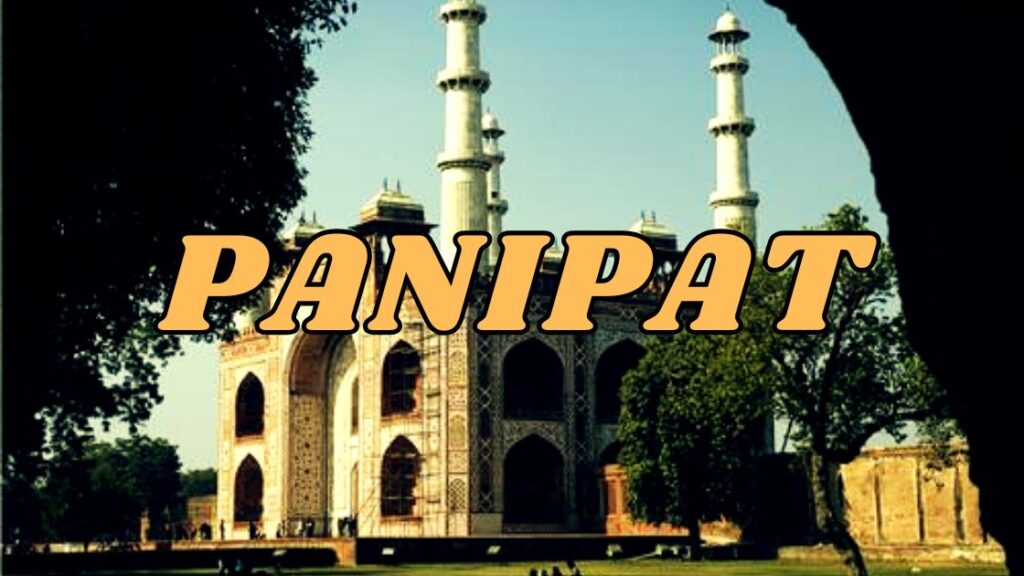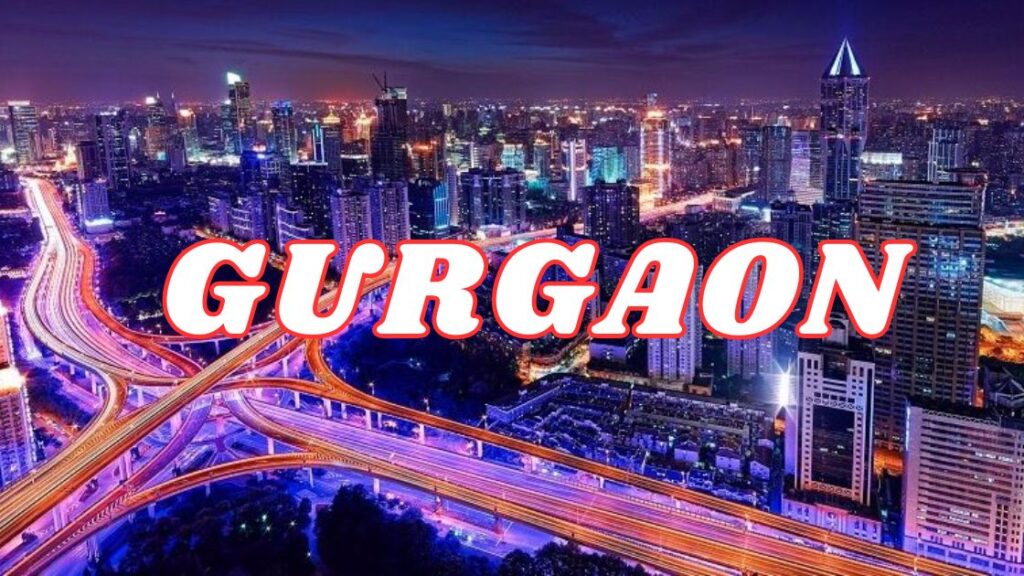Republic Day is the most significant national celebration of India, commemorated every year on January 26. This remarkable day marks the day when the Constitution of India came into force in 1950, making India a sovereign democratic republic. The Republic of India, governed by its Constitution, signifies national unity, democratic integrity, and the progressive values of a free nation. It is celebrated to honor the political and constitutional transformation of the country from a British dominion to a self-governing republic.
The choice of January 26 for Republic Day has historical significance, marking the day in 1930 when the Indian National Congress (INC) declared Purna Swaraj or complete independence. It symbolizes the culmination of India’s long struggle for freedom and self-rule. While Independence Day marks the nation’s freedom from colonial rule in 1947, Republic Day denotes India’s formal declaration of self-sovereignty and democratic ideals through the adoption of the Constitution of India.
India’s 76th Republic Day: A Salute to Freedom on 26 January
This day is marked by grand celebrations across the country, with the grandest happening at Rajpath, New Delhi, where the Republic Day Parade showcases India’s military power, cultural diversity, and technological advancements. This article will explore the significance of Republic Day, its origins, celebration rituals, and its impact on Indian identity.
Historical Context Leading to Republic Day
To understand the significance of Republic Day, we must first dive into India’s historical journey that paved the way for its independence and eventual sovereignty. For centuries, India was ruled by various dynasties and colonial powers, the most notable being the British Empire, which controlled the country for nearly two centuries. During the colonial rule, Indians faced systemic oppression, exploitation, and disregard for their rights.
The Indian independence movement began in the late 19th century and was spearheaded by countless political figures, thinkers, and revolutionaries. Leaders like Mahatma Gandhi, Jawaharlal Nehru, and Subhas Chandra Bose played instrumental roles in organizing peaceful protests, revolutionary activities, and mobilizing the masses against British rule.
However, it was on August 15, 1947, when India finally achieved freedom from British colonialism. Yet, India needed a guiding force to ensure a unified and democratic republic. In November 1946, the Constituent Assembly was established, tasked with drafting a constitution that would uphold fundamental rights, provide for democratic governance, and accommodate India’s diverse cultural, linguistic, and religious population.
Thus, Republic Day reflects not just India’s independence, but its transformation into a country committed to self-rule based on democratic ideals.
Freedom Movements
India’s journey to freedom and sovereignty was marked by intense struggles that lasted over 150 years. Various freedom movements ignited nationalistic fervor and sought justice against the injustices of colonial rule. From early efforts like the Sepoy Mutiny in 1857 to movements like Non-Cooperation and Civil Disobedience, the fight for independence only grew in intensity.
Mahatma Gandhi was instrumental in popularizing the idea of non-violent resistance against the British government. His famous Salt March in 1930 and the Quit India Movement in 1942 galvanized the masses and brought the British Empire to its knees. Although Gandhi remained the foremost leader during the struggle, other prominent figures such as Jawaharlal Nehru, Subhas Chandra Bose, Sardar Patel, and B.R. Ambedkar also played significant roles in the national movement.
Moreover, the freedom struggle wasn’t just political; it was also a cultural and economic awakening. Nationalists wanted to replace colonial laws and policies with systems that prioritized the well-being of citizens and the development of the Indian subcontinent. The Indian masses, spanning across rural areas, urban centers, and distant provinces, collectively sought a vision of an independent India that was inclusive, just, and democratic.

The culmination of this independence movement is India’s self-rule, acknowledged on August 15, 1947, which set the stage for the creation of a Republic. However, it wasn’t until January 26, 1950, when India truly became a republic under the guidance of its Constitution, embodying sovereignty, democracy, and justice.
Who Shaped India’s Constitution
The drafting of the Constitution of India was an intellectual endeavor of the highest order. The Indian Constituent Assembly, which first met in December 1946, was composed of brilliant minds and forward-thinking leaders who sought to create a legal framework for a diverse and democratic nation. The Constitution, adopted on November 26, 1949, came into force on January 26, 1950, making India a sovereign republic.
Dr. B.R. Ambedkar, often called the Father of the Indian Constitution, was its principal architect. Ambedkar was instrumental in drafting the document that guaranteed fundamental rights and set forth the principles of justice, liberty, equality, and fraternity. His focus on social justice and protecting minorities was crucial in creating a constitution that could cater to India’s diverse population, including historically marginalized groups.
The Constituent Assembly also included leaders like Jawaharlal Nehru, who envisioned India as a democratic and secular state; Sardar Vallabhbhai Patel, the architect of India’s integration post-independence; and Rajendra Prasad, who would go on to become India’s first President. Other contributors, such as Maulana Azad and K. M. Munshi, played key roles in framing the nation’s guiding principles.
The Indian Constitution is one of the longest in the world, featuring provisions for both governance and human rights. Notably, it reflects a commitment to democracy, individual rights, and the need for a legal framework to sustain democratic ideals, even as the country struggles with poverty, inequality, and religious differences.
Constitution of India
The Constitution of India is one of the longest written constitutions in the world. It stands as a detailed blueprint for governing a complex and diverse nation. The Indian Constitution, which came into force on January 26, 1950, establishes the foundation for governance, human rights, judicial structures, and governance processes in India.
At its core, the Constitution of India was drafted to address the aspirations of its citizens, who sought not only freedom from colonial rule but also a country where justice, equality, and fraternity prevailed. It establishes India as a sovereign, socialist, secular, democratic republic, ensuring that citizens of every community, caste, and religion are entitled to equal rights before the law.
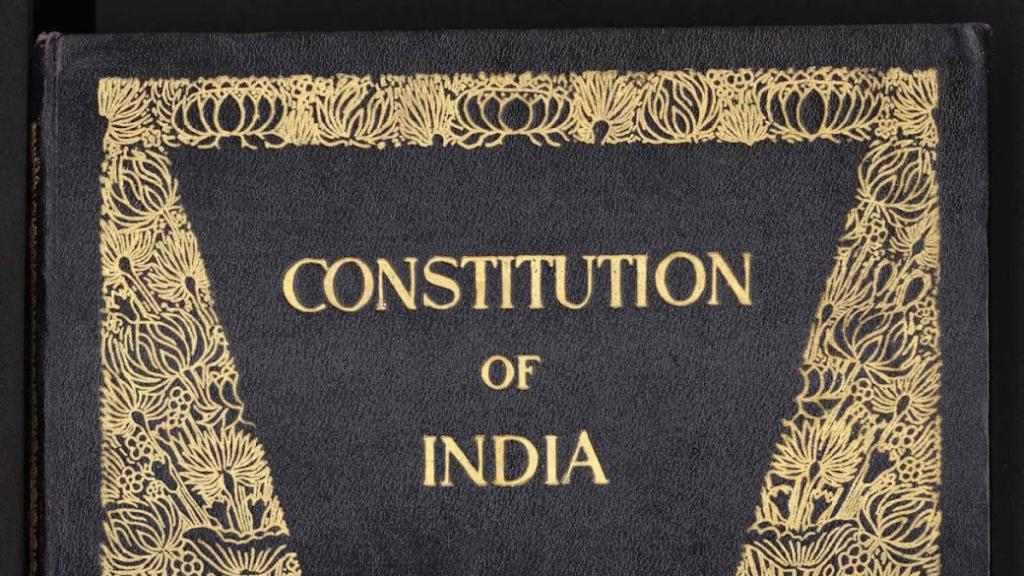
The Preamble to the Constitution lays out the vision for India as a free, democratic country. It outlines the values that the framers intended the republic to embody. It contains promises of justice, liberty, and equality for all citizens, regardless of caste, creed, religion, or gender.
The Constitution’s central provisions include creating the framework for India’s democratic institutions. These include a Parliament, a President, a Supreme Court, and federalism between central and state governments. Importantly, the Constitution provides for the protection of fundamental rights and freedom for individuals, laying down the political framework within which laws should operate in India.
Republic Day Parade
The Republic Day Parade, which is the centerpiece of India’s Republic Day celebrations, is an iconic and significant event, attracting global attention. The parade begins at Rajpath, in the heart of New Delhi, and showcases the country’s military strength, cultural diversity, and technological innovations. The parade lasts for several hours and is witnessed by dignitaries from across the world, alongside national leaders, schoolchildren, and citizens of India.
The parade opens with a ceremonial flag hoisting by the President, accompanied by a 21-gun salute—a mark of respect for the national flag and the unity of India. Following this, the President delivers a speech that highlights the country’s progress, challenges, and resolve toward further development
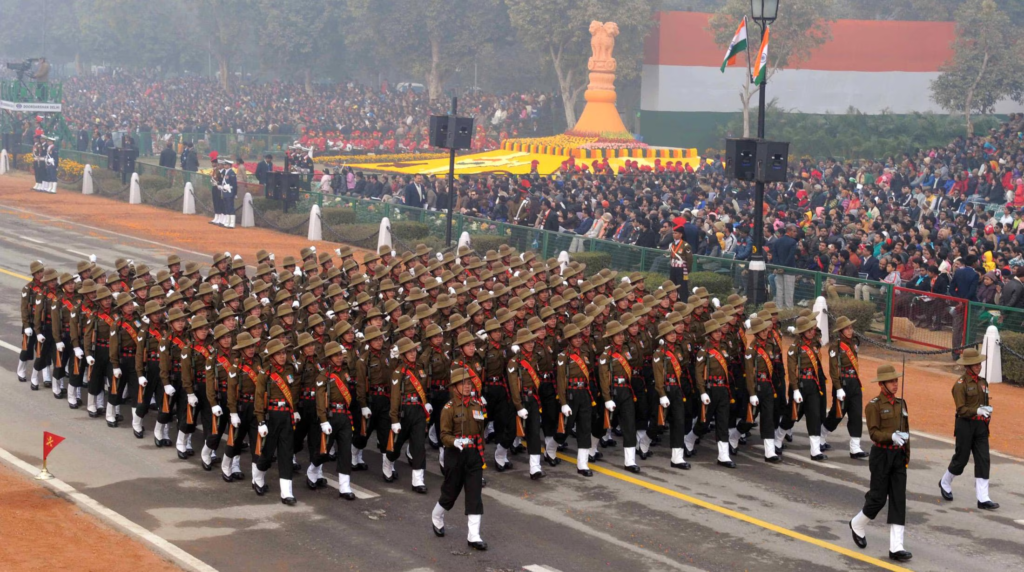
One of the parade’s key highlights is the military spectacle, with tanks, missile carriers, and other state-of-the-art machinery marching in full display of India’s defense capabilities. The parade features regiments from Indian Armed Forces, including the Army, Navy, Air Force, and paramilitary forces.
Also, the parade showcases cultural floats from various states of India, each representing the state’s history, culture, folklore, and architecture. Tableaux of states, displaying themes of unity in diversity, have become iconic over the years.
The Role of the President of India
The President of India plays a significant ceremonial and constitutional role during Republic Day celebrations. As the ceremonial head of the Indian state, the President presides over the Republic Day Parade at Rajpath, where they unfurl the national flag and formally begin the festivities. As per the Constitution of India, the President is entrusted with a range of constitutional powers that are key in overseeing the administration and democratic processes of the country.
On Republic Day, the President delivers the Republic Day Address, which provides insight into the nation’s progress, democratic spirit, and current issues of national concern. This is an opportunity for the head of state to communicate directly with the people of India. Often, the speech addresses India’s political relations, economic status, international ties, and emerging challenges.
Along with ceremonial duties, the President also plays a significant role in honoring and recognizing national heroes, military officers, and individuals with distinguished services to the country. In the Padma Awards ceremony, which typically occurs on Republic Day, the President honors citizens with high civilian awards, marking their exceptional contributions across various fields like arts, science, public service, and more.
Through the Republic Day Parade, the President reinforces the core ideals of India’s democratic republic. By symbolizing the unity of India, they emphasize the nation’s commitment to its constitution and further the work of bringing equality and prosperity to all its citizens.
Republic Day in India’s Schools and Grassroots
While the Republic Day Parade in New Delhi is widely known and respected across the world, Republic Day celebrations also occur at grassroots levels, especially in India’s schools. The significance of this day permeates through the education system, where it is deeply rooted as a moment to celebrate the unity, culture, and diversity of India.
Schools all over the country, from urban to rural regions, celebrate Republic Day in a series of planned programs. On the morning of January 26, the national flag is hoisted in schools, and students participate in marching bands, singing the National Anthem, and patriotic performances. In many schools, there are debates, exhibitions, and speeches on the importance of Republic Day and India’s constitutional framework.

Republic Day celebrations in educational institutions serve as a teaching moment for children to understand the significance of the Indian Constitution and how it shapes their everyday lives. These celebrations help instill national pride and patriotism among the younger generation, guiding them on how to appreciate democracy, justice, and freedom.
Many schools also engage students in cultural activities, which reflect the diverse heritage of India, from classical music and traditional dances to various indigenous forms of art and culture. Teachers guide the children through activities that teach them about India’s freedom struggle and encourage them to cherish the values of unity that Republic Day embodies.
Such grassroots activities and small-scale celebrations help convey the importance of Republic Day in a manner that is relatable to children and communities at a foundational level.
Cultural Importance of Republic Day
Republic Day is not just a celebration of India’s political independence and democratic constitution but also holds immense cultural significance. The grandeur of the Republic Day Parade and other celebrations emphasizes the country’s diversity and rich cultural heritage, showcasing regional crafts, languages, traditional music, and dance performances from across the length and breadth of the country.
One of the key features of Republic Day is the floats that are presented by the states of India. These colorful floats embody the traditional attire, festivals, and festivals of each state, representing the variety and diversity of Indian culture. States and regions across India celebrate Republic Day through unique festivities, with local communities performing their regional arts and sharing aspects of their indigenous cultures.
From the cultural dances of the Northeast to the folk music of Punjab, and the classical dance forms of South India, every corner of India comes alive on Republic Day. These performances highlight India’s cultural identity as a whole – its ability to foster unity amidst vast cultural differences. School programs across the country continue these traditions by organizing art displays, folk dance performances, and similar celebrations, drawing attention to regional art forms and craftsmanship.
Moreover, India’s diverse food culture is celebrated on Republic Day, as many cultural exhibitions and parades feature cuisines that represent various states. From Hyderabadi Biryani to Rajasthani Dishes and Kashmiri Kebabs, each region’s food is a reflection of its traditions and ethnic background.
Through these collective cultural expressions, Republic Day helps reinforce the central idea of unity in diversity, making it both a celebration of governance and of India’s multifaceted cultural roots.
Republic Day 2025: Expectations and Global Impact
Looking ahead to Republic Day 2025, there is much anticipation regarding the future trajectory of India as it celebrates another year of progress as a sovereign democratic republic. As India continues to assert itself on the global stage, Republic Day 2025 presents an opportunity to showcase how India has evolved in terms of governance, economy, and technological advancement.
The Indian military will likely continue its stellar showcase on January 26, 2025, highlighting its growing technological power and self-sufficiency in defense technologies. With innovations in cybersecurity, satellite technology, and missile systems, India’s defense forces will undoubtedly play an integral role in the national spectacle. Additionally, India’s rising role in global politics might influence the global community’s perceptions of India, creating opportunities to further highlight the growing strength of its foreign relations on Republic Day.
Culturally, as India becomes more digitally connected, it is likely that Republic Day celebrations in schools and at the local grassroots level will integrate technology, such as live streaming of events, digital artwork, and social media campaigns highlighting the nation’s achievements and challenges.
India’s involvement in the global economy continues to grow rapidly, with sectors such as finance, technology, and renewable energy paving the way for further prosperity. On Republic Day 2025, India will not only celebrate its constitutional legacy but also reaffirm its role as a world leader committed to sustainability, digitalization, and economic empowerment.
The Legacy of Republic Day
The legacy of Republic Day extends beyond mere celebrations; it is embedded in the collective identity and cultural ethos of the Indian people. Republic Day serves as a day of reflection, where people assess the nation’s growth, the protection of individual rights, the empowerment of the underprivileged, and the ongoing work needed to address social issues such as poverty, inequality, and corruption.
Republic Day acts as a reminder of India’s resilience, bringing the populace together to honor its achievements, sacrifices, and democratic success. Over the years, its celebrations have become more inclusive, reflecting both the historical and modern challenges India faces, with greater emphasis on local communities, underrepresented regions, and public services.
The Republic Day Parade in New Delhi itself has evolved, now including cultural performances by diverse groups, schoolchildren, and youth from different parts of the country. These celebrations often highlight the very essence of India’s founding principles: equality, freedom, and justice.
The Flag Hoisting Ceremony
The Flag Hoisting Ceremony is one of the most important rituals during Republic Day celebrations. Every year, the country stands still to witness the National Flag, the Tiranga, being hoisted at Rajpath in New Delhi by the President of India. The flag represents the essence of unity, freedom, and the nation’s democratic principles.
The ceremony begins with a series of organized military salutes, followed by the official hoisting of the flag, which stands for the integrity of India and its unity across states and territories. Accompanied by the National Anthem, this event marks a moment of pride and honor as it is an acknowledgment of the sacrifices made by our freedom fighters, the milestones achieved by the country, and the commitments to equality and freedom for all citizens.
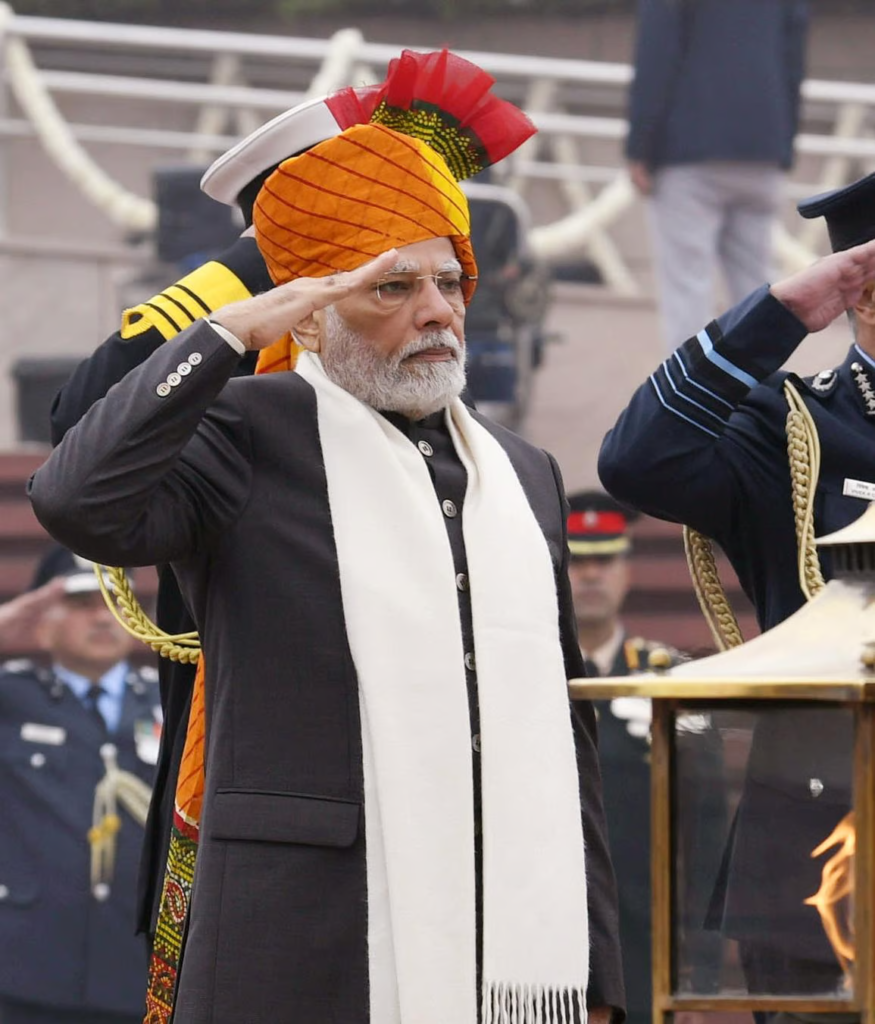
The ceremony is a spectacle of discipline and patriotism, with the Indian Armed Forces present to salute the flag and show their respect. Many institutions, whether schools, government buildings, or regional towns, organize similar flag-hoisting events on this day, enhancing the cultural fabric of national pride. When the flag flutters high, it signifies not just the country’s sovereignty, but the continuation of the democratic values nurtured by India’s Constitution.
The moment serves as a reminder to citizens across India about the ideals of democracy, secularism, social justice, and liberty, and encourages unity irrespective of regional, cultural, or religious differences.
The Significance of Patriotic Music on Republic Day
Music holds a special place in the Republic Day celebrations, with patriotic songs and marching bands forming an integral part of the festivities. The Indian Army, Navy, and Air Force bands perform a blend of patriotic tunes, inspiring both citizens and soldiers alike with the themes of love for the motherland, bravery, and the rich heritage of India.
The National Anthem, “Jana Gana Mana”, is the focal piece of the ceremony. It is an essential aspect of the flag hoisting, parades, and other related activities, symbolizing unity across the diverse communities of India. Singing the anthem not only signifies national pride but also national integrity and oneness.
Other songs such as “Vande Mataram“, “Mile Sur Mera Tumhara“, and various regional anthems create a deep, emotional connection among the masses. Such songs instill values of unity, love, and the spirit of nationalism, uniting people from all walks of life. These pieces of music, often instrumental and emotional, stir the soul, reminding individuals of the shared history and collective dreams of a free India.
Moreover, the role of school students performing traditional and patriotic songs showcases an ongoing tradition that perpetuates love for India and contributes to the country’s cultural identity. Through this medium, Republic Day celebrations allow for musical diversity, from classical to contemporary, reflecting both India’s deep-rooted heritage and its future aspirations.
The Republic Day Parade
The Republic Day Parade held in New Delhi is among the largest and most spectacular celebrations in India, drawing global attention every year. The parade marks India’s cultural diversity, military strength, and progress in a visually stunning display that spans across more than 2 kilometers of Rajpath, a ceremonial avenue in the Indian capital.
The procession kicks off with a ceremonial salute and the national flag’s hoisting. After this, military bands from the Indian Armed Forces march with utmost discipline, playing military music that is synchronized with the movements of soldiers. The pride of the Indian military is seen in the uniformity of the marchers, as the armed forces portray their exceptional coordination and dedication. The presence of India’s diverse military regiments, including the Indian Army, Navy, and Air Force, gives an impression of strength and the unity that binds the country together.
Floats representing different Indian states also take part in the parade, a feature that gives the event a multi-faceted approach, showcasing local heritage, traditional crafts, music, and culture. States feature their best culture, customs, and heritage, giving everyone a glimpse of the Indian way of life.
Further into the procession, high-tech weaponry such as fighter jets and tanks symbolize India’s progress in defense and its increasing self-reliance. The fly-past performed by the Indian Air Force jets, which release trails of colored smoke in the sky, signals the nation’s modernity and future resilience.
What makes this parade distinct is its symbolic demonstration of India’s national unity and global advancement, built upon the foundation laid by the Indian Constitution.
The Role of Women in Republic Day Celebrations
Women’s participation in Republic Day celebrations is highly significant and symbolizes the progressive strides that India has made in fostering gender equality. Women actively participate in the Republic Day Parade, whether through performances, flying the tricolored flag, or representing India in defense forces. Women have taken on vital roles not only in the country’s military but also in law enforcement and various other sectors, establishing their presence as the backbone of the republic.
The inclusion of women in India’s armed forces and police services is increasingly visible in the Republic Day celebrations. Female contingents from paramilitary forces, the NCC (National Cadet Corps), and the Army showcase their discipline through marching with precision on Rajpath. Women play central roles in the delivery of Republic Day speeches in various events across the country.
Moreover, women in community leadership, grassroots organizing, and in schools actively contribute to raising awareness about Indian independence, the Constitution, and national progress through public speeches, debates, and patriotism programs.
The participation of women also emphasizes equality, which the Indian Constitution promises to uphold for all. Women leaders are honored during this occasion to further extend the notion of equal opportunities. India continues to bring forth more women leaders, athletes, and officers, who take part in the Republic Day Parade and are often seen leading the youth, shaping the future of India’s governance, industry, and defense sector.
Global Recognition of India’s Republic Day
India’s Republic Day has garnered increasing recognition globally over the years, with international leaders expressing their admiration for India’s unique cultural amalgamation, political system, and democratic values. As the world’s largest democracy, India’s Republic Day is not only celebrated within the country but is also acknowledged globally.
Several foreign dignitaries have been invited as chief guests for Republic Day celebrations, adding prestige to the event and fostering diplomatic relations between India and various countries. The presence of international leaders during this day reflects the importance of India’s voice in the international arena.
Furthermore, Indian expatriates residing abroad often come together to commemorate Republic Day with ceremonies resembling the ones held in India, with hoisting the national flag, performing patriotic songs, and discussing India’s development in the face of challenges. This resonates with the Indian diaspora, who feel deeply connected to India through shared values of democracy, liberty, and unity in diversity.
In countries such as the United States, Canada, Australia, and United Kingdom, communities celebrate Republic Day with patriotic displays of Indian culture, showing solidarity with India and its rich tradition. Events abroad allow people to connect with the homeland, celebrate national pride, and further promote Indian heritage in the international community.

